While running the Intel Graphics Driver installer, some users have reported encountering the following error: Your system has a driver locked to manufacturer specifications, Exit Code 1. As a result, they fail to install the Intel Graphics driver. The issue occurs because your existing graphics driver is locked to the manufacturer’s preset specification due to security reasons. This post will share how to override this lock, and install the driver.
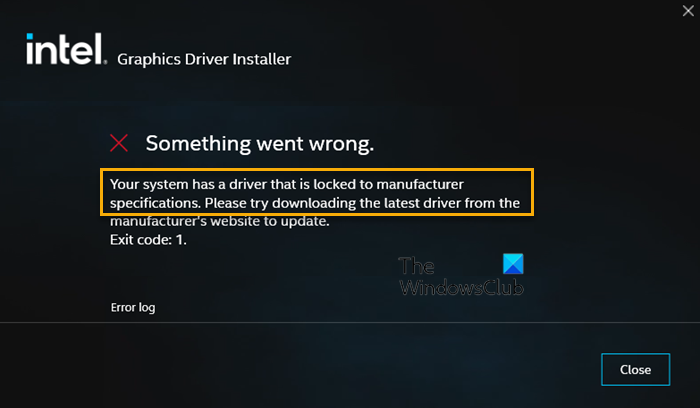
What causes Your system to have a driver locked to manufacturer specifications?
The simple reason behind this error is that your PC has a driver locked to your OEM’s manufacturer specification. Unless the OEM pushes an update, it will not be updated. Some OEMs do it to ensure the system is stable and completely controlled. However, it may not work long-term with new features rolling out.
Your system has a driver that is locked to manufacturer specifications
The suggested methods will check if the latest driver is compatible, then force uninstall and install the driver. This will help you fix Your system has a driver locked to manufacturer specifications, Exit Code 1.
- Check OS Requirements
- Force uninstall the driver
- Install the driver in offline mode
You will need an administrator account to execute these suggestions.
1] Check OS Requirements
Since you plan to install the latest version, you must check if it is compatible with your OS. If not, then you need to upgrade to the latest Windows. You can visit the Windows Update section and install it if the update is available.
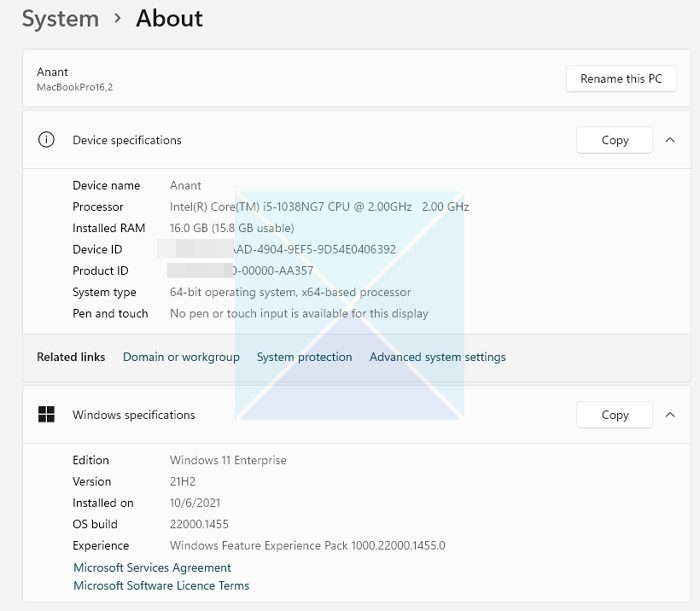
If you cannot get the latest version of Windows because of hardware limitations, you need to check if the OEM offers a driver version that works with the installed OS. Most manufacturers now offer software assistants that can check the version of your Windows and then automatically install the driver which works best for your configuration.
2] Force uninstall the driver
If you found the version that can work on your PC, you must uninstall the locked version and choose to install it. The only way to uninstall the driver is by using the software assistant offered by the OEM or third-party software. For example, DDU or Display Driver Uninstaller for Graphics Drivers can remove old drivers from your PC. You can use this one if the OEM software is not working as expected.
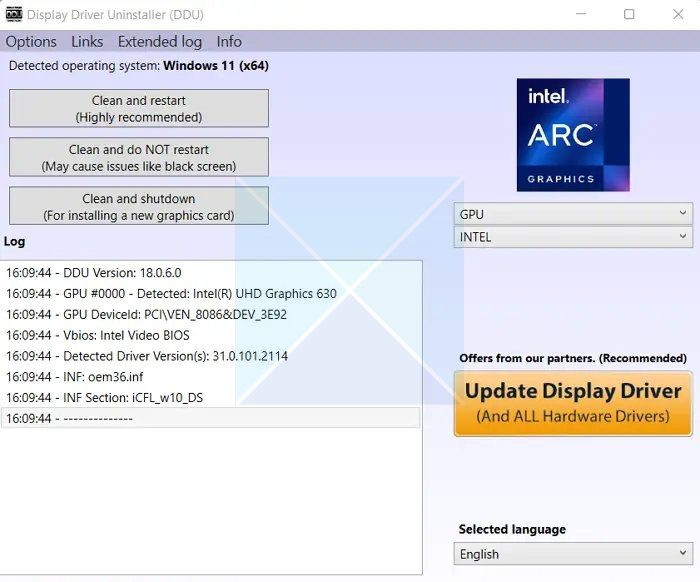
To force uninstall the driver, follow the below steps:
- First, download Display Driver Uninstaller (DDU) and install it on your PC.
- Then reboot your PC into Safe mode for a smooth cleanup procedure.
- Once you are in safe mode, launch Display Driver Uninstaller.
- Next, select the device type as GPU.
- Once done, click on Clean and Restart, and it will uninstall the existing graphics driver.
- After rebooting your PC, download the latest version or driver installed, and then install it. Make sure to select clean install.
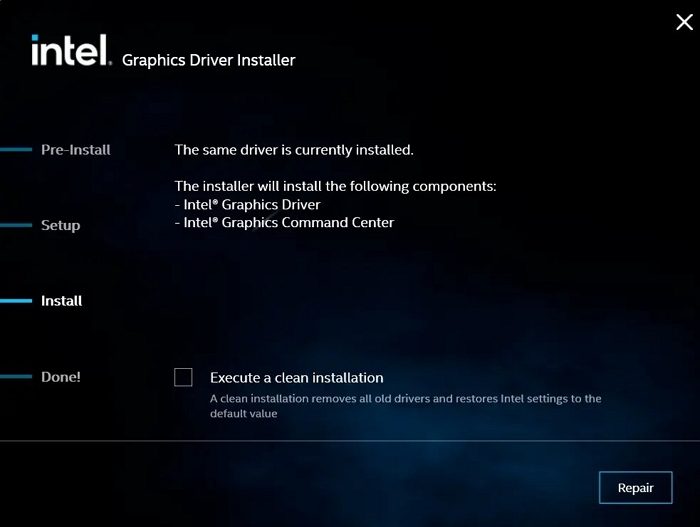
When using DDU, choose the correct processor and device types.
Read: No driver was found that can be installed on the current device, Exit code 8
3] Install the driver in offline mode
If you fail to install the graphics driver using the above method, the next step would be to install the driver offline. Doing so will prevent any check done by the installer, resulting in installation failure.
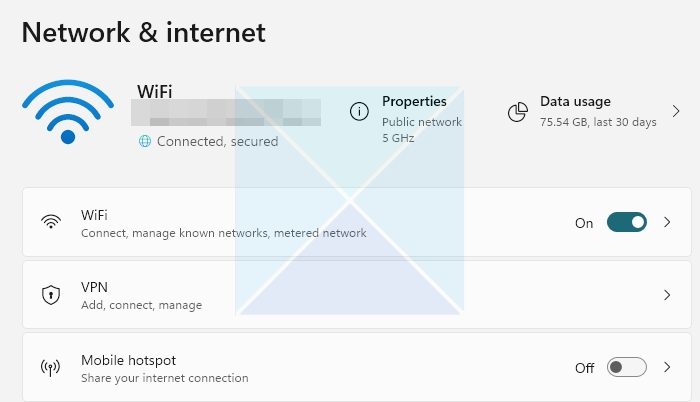
- For this, you are first required to disconnect the internet. Go to Settings > Network & internet > Advanced network settings.
- Over here, disable your active Ethernet or Wi-Fi connection.
- Next, you need to uninstall your existing graphics driver using DDU
- After that, download the latest version of the driver from the hardware vendor.
- When you reach the installation page, click the Customize button.
- Over here, ensure not to enable the Execute a clean installation check.
- Then complete the installation following the onscreen steps.
Once done, make sure to disable automatic driver update by Windows.
So that was all about your system having a locked driver to manufacturer specifications. Usually, the problem should be resolved using DDU and installing the latest and compatible version of the driver. If nothing works, contact the support team to resolve it.
What happens if a driver is not installed on your computer?
If Windows doesn’t find a driver from the OEM, it will automatically install a generic driver. Everything will work as expected. However, the functionality will be limited. In the case of GPU, custom resolution and app/game specific driver will not be available, and you will get the performance. It would be best to use only a generic driver to troubleshoot issues.
Leave a Reply